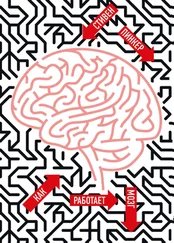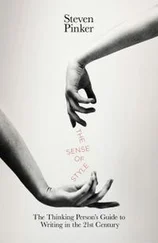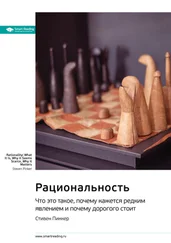Baldwin, D. A. 1991. Infants' contribution to the achievement of joint reference. Child Development, 62, 875–890.
Bamforth, D. B. 1994. Indigenous people, indigenous violence: Precontact warfare on the North American Great Plains. Man, 29, 95–115.
Barkley, R. A., Ullman, D. G., Otto, L., & Brecht, J. M. 1977. The effects of sex typing and sex appropriateness of modeled behavior on children's imitation. Child Development, 48, 721–725.
Barkow, J. H., Cosmides, L., & Tooby, J. 1992. The adapted mind: Evolutionary psychology and the generation of culture. New York: Oxford University Press.
Baron-Cohen, S. 1995. Mindblindness: An essay on autism and theory of mind. Cambridge, Mass.: MIT Press.
Barry, D. 1995. Dave Barry's complete guide to guys. New York: Ballantine.
Barsky, R. F. 1997. Noam Chomsky: A life of dissent. Cambridge, Mass.: MIT Press. Barthes, R. 1972. To write: An intransitive verb? In R. Macksey & E. Donato (Eds.), The languages of criticism and the science of man: The structuralist controversy. Baltimore: Johns Hopkins University Press.
Bauer, R. A. 1952. The new man in Soviet psychology. Cambridge, Mass.: Harvard University Press.
Becker, G. S. 1991. A treatise on the family enlarged ed. Cambridge, Mass.: Harvard University Press.
Behe, M. J. 1996. Darwin's black box: The biochemical challenge to evolution. New York: Free Press.
Behrens, R. R. 1998. Art, design, and gestalt theory. Leonardo, 31, 299–304. Belenky, M. F., Clinchy, B. M., Goldberger, N. R., & Tarule, J. M. 1986. Women's ways of knowing. New York: Basic Books.
Bell, Q. 1992. On human finery. London: Allison & Busby.
Benedict, R. 1934/1959. Anthropology and the abnormal. In M. Mead (Ed.), An anthropologist at work: Writings of Ruth Benedict. Boston: Houghton Mifflin.
Benjamin, J., Li, L., Patterson, C., Greenberg, B. D., Murphy, D. L., & Hamer, D. H. 1996. Population and familial association between the D4 dopamine receptor gene and measures of novelty seeking. Nature Genetics, 12, 81–84.
Berent, I., Pinker, S., & Shimron, J. 1999. Default nominal inflection in Hebrew: Evidence for mental variables. Cognition, 72, 1–44.
Berlin, I. 1996. The sense of reality: Studies in ideas and their history. New York: Farrar, Straus, & Giroux.
Berra, T. M. 1990. Evolution and the myth of creationism. Stanford, Calif.: Stanford University Press.
Besançon, A. 1981. The intellectual origins of Leninism. Oxford: Basil Blackwell. Besançon, A. 1998. Forgotten communism. Commentary, 24–27.
Betzig, L. L. 1997. Human nature: a critical reader. New York: Oxford University Press.
Bishop, K. M., Coudreau, G., & O'Leary, D. D. M. 2000. Regulation of area identity in the mammalian neocortex by Emx2 and Pax6. Science, 288, 344–349.
Blair, J., & Cipolotti, L. 2000. Impaired social response reversal: A case of "acquired sociopathy." Brain, 123, 1122–1141.
Blinkhorn, S. 1982. Review of S. J. Gould's "The mismeasure of man." Nature, 296, 506.
Bloom, P. 1994. Generativity within language and other cognitive domains. Cognition, 51, 177–189.
Bloom, P. 1996. Intention, history, and artifact concepts. Cognition, 60, 1–29. Blum, D. 1997. Sex on the brain: The biological differences between men and women. New York: Viking.
Boas, F. 1911. Language and thought. In Handbook of American Indian languages. Lincoln, NE: Bison Books.
Bock, G. R., & Goode, J. A. (Eds.) 1996. The genetics of criminal and antisocial behavior. New York: Wiley.
Bodmer, W. F., & Cavalli-Sforza, L. L. 1970. Intelligence and race. Scientific American.
Boehm, C. 1999. Hierarchy in the forest: The evolution of egalitarian behavior. Cambridge, Mass.: Harvard University Press.
Borges, J. L. 1964. The lottery in Babylon, Labyriths: Selected stories and other writings. New York: New Directions.
Bouchard, T. J., Jr. 1994. Genes, environment, and personality. Science, 264, 1700–1701.
Bouchard, T. J., Jr., Lykken, D. T., McGue, M., Segal, N. L., & Tellegen, A. 1990. Sources of human psychological differences: The Minnesota Study of Twins Reared Apart. Science, 250, 223–228.
Bouchard, T. J. Jr. 1998. Genetic and environmental influences on intelligence and special mental abilities. Human Biology, 70, 257–259.
Bourdieu, P. 1984. Distinction: A social critique of the judgment of taste. Cambridge, Mass.: Harvard University Press.
Bourgeois, J.-P., Goldman-Rakic, P. S., & Rakic, P. 2000. Formation, elimination, and stabilization of synapses in the primate cerebral cortex. In M. S. Gazzaniga (Ed.), The new cognitive neurosciences. Cambridge, Mass.: MIT Press.
Bourke, J. 1999. An intimate history of killing: Face-to-face killing in 20th-century warfare. New York: Basic Books.
Bowles, S., & Gintis, H. 1998. Is equality passé? Homo reciprocans and the future of egalitarian politics. Boston Review.
Bowles, S., & Gintis, H. 1999. Recasting egalitarianism: New rules for communities, states, and markets. New York: Verso.
Boyd, B. 1998. Jane, meet Charles: Literature, evolution, and human nature. Philosophy and Literature, 22, 1–30.
Boyd, R., & Richerson, P. 1985. Culture and the evolutionary process. Chicago: University of Chicago Press.
Boyd, R., & Silk, J. R. 1996. How humans evolved. New York: Norton.
Boyer, P. 1994. Cognitive constraints on cultural representations: Natural ontologies and religious ideas. In L. A. Hirschfeld & S. A. Gelman (Eds.), Mapping the mind: Domain specificity in cognition and culture. New York: Cambridge University Press.
Braine, M. D. S. 1994. Mental logic and how to discover it. In J. Macnamara & G. Reyes (Eds.), The logical foundations of cognition. New York: Oxford University Press.
Bregman, A. S. 1990. Auditory scene analysis: The perceptual organization of sound. Cambridge, Mass.: MIT Press.
Bregman, A. S., & Pinker, S. 1978. Auditory streaming and the building of timbre. тanadian Journal of Psychology, 32, 19–31.
Breland, K., & Breland, M. 1961. The misbehavior of organisms. American Psychologist, 16, 681–684.
Brink, D. O. 1989. Moral realism and the foundations of ethics. New York: Cambridge University Press.
Brociner, K. 2001. Utopianism, human nature, and the left. Dissent, 89–92.
Brock, D. W. 1993. Life and death: Philosophical essays in biomedical ethics. New York: Cambridge University Press.
Brooker, P. 1999. A concise glossary of cultural theory. New York: Oxford University Press.
Brown, D. E. 1991. Human universals. New York: McGraw-Hill.
Brown, D. E. 2000. Human universals and their implications. In N. Roughley (Ed.), Being humans: Anthropological universality and particularity in transdisciplinary perspectives. New York: Walter de Gruyter.
Brown, R. 1985. Social psychology: The second edition. New York: Free Press. Browne, K. 1998. Divided labors: An evolutionary view of women at work. London: Weidenfeld and Nicholson.
Brownmiller, S. 1975. Against our will: Men, women, and rape. New York: Fawcett Columbine.
Brownmiller, S., & Merhof, B. 1992. A feminist response to rape as an adaptation in men. Behavioral and Brain Sciences, 15, 381–382.
Bruer, J. 1997. Education and the brain: A bridge too far. Educational Researcher, 26, 4–16.
Bruer, J. 1999. The myth of the first three years: A new understanding of brain development and lifelong learning. New York: Free Press.
Brugger, P., Kollias, S. S., Müri, R. M., Crelier, G., Hepp-Reymond, M.-C., & Regard, M. 2000. Beyond re-membering: Phantom sensations of congenitally absent limbs. Proceedings of the National Academy of Science, 97, 6167–6172.
Bueno de Mesquita, B. 1981. The war trap. New Haven: Yale University Press. Bullock, A. 1991. Hitler and Stalin: Parallel lives. London: HarperCollins.
Burke, E. 1790/1967. Reflections on the revolution in France. London: J. M. Dent & Sons.
Читать дальше
Конец ознакомительного отрывка
Купить книгу











